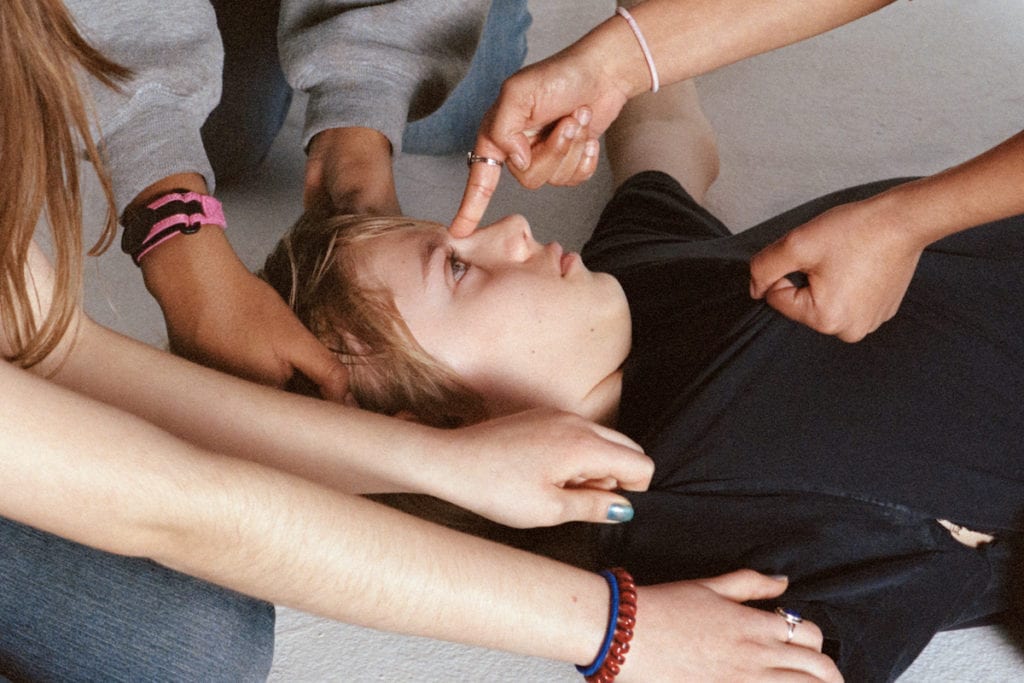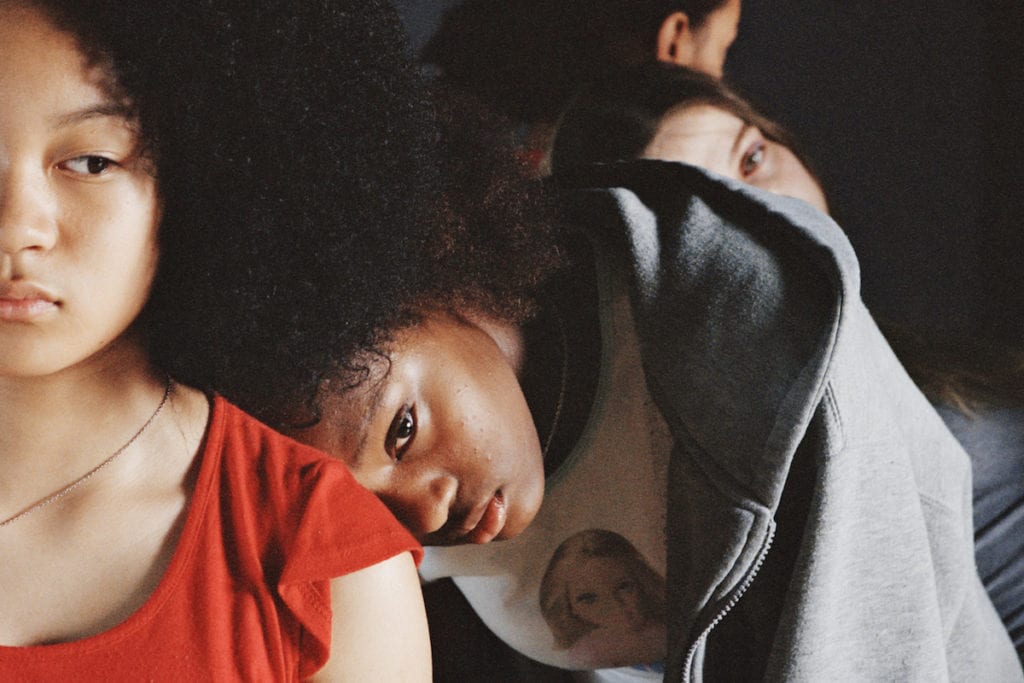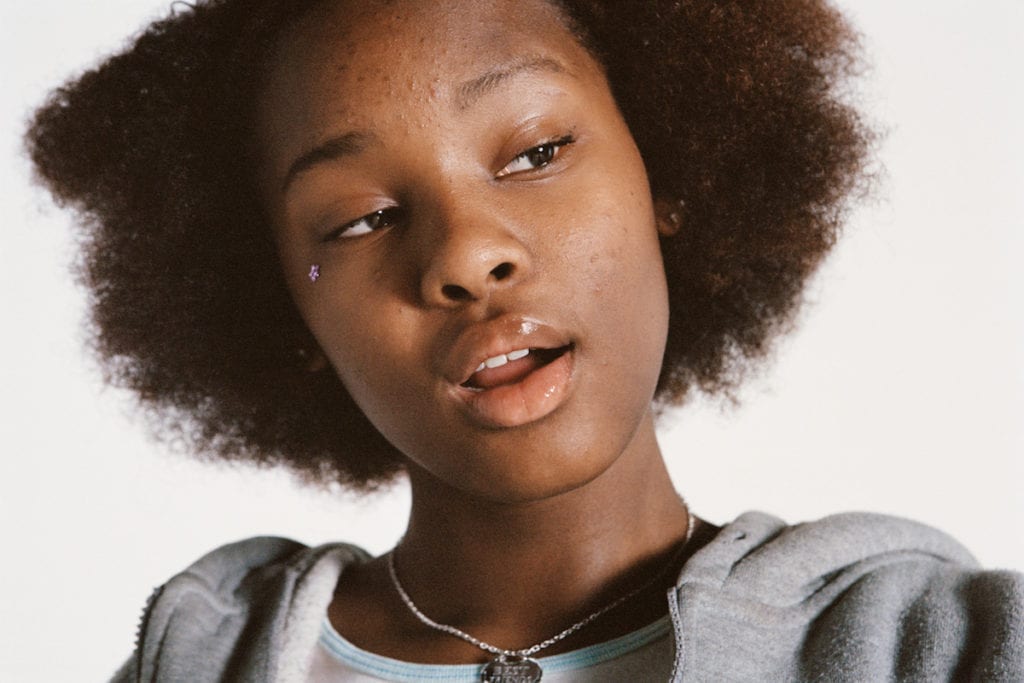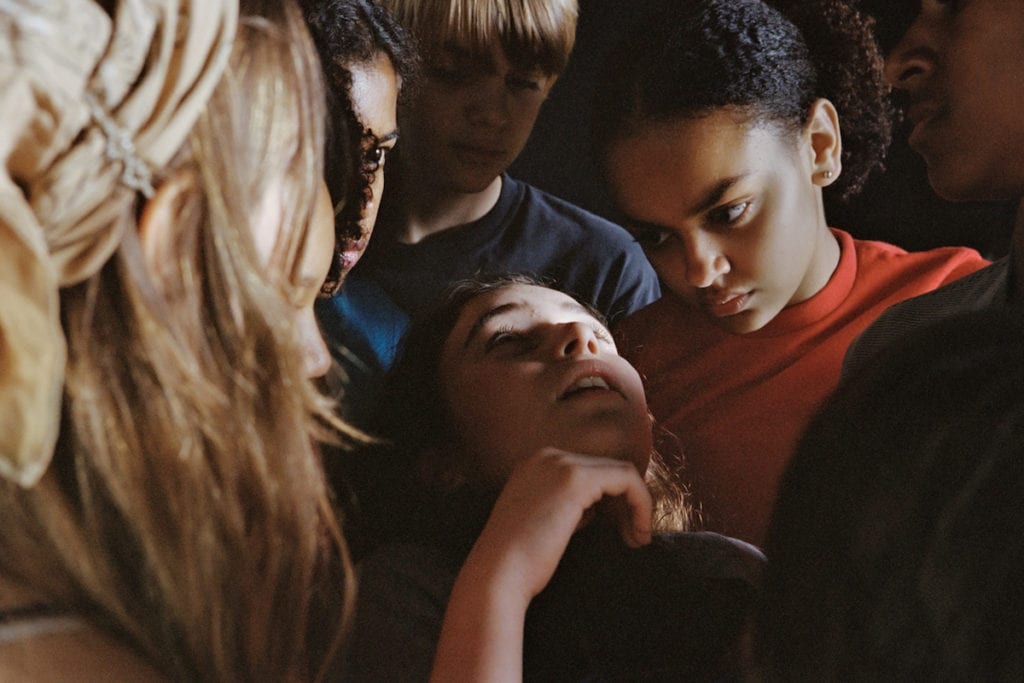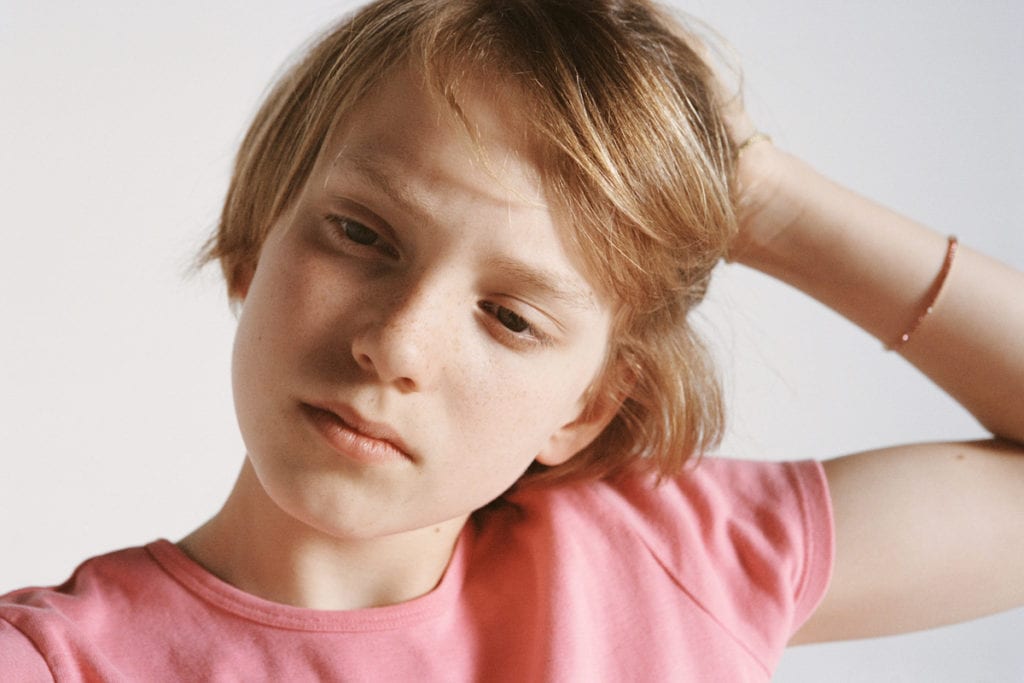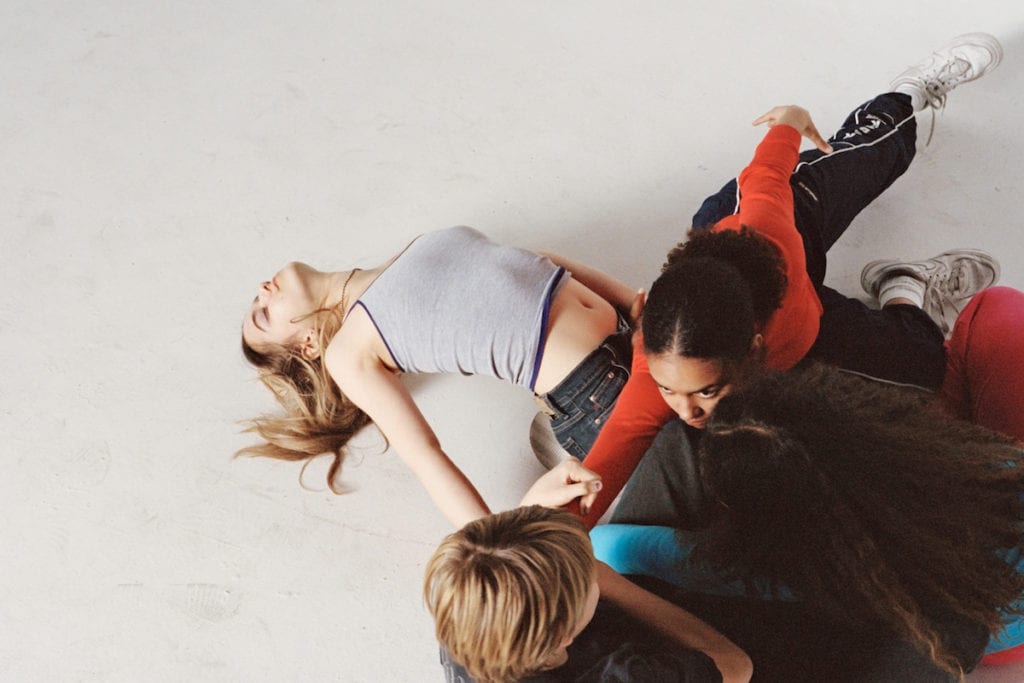The subjects of HART LËSHKINA’s latest series Show Me How To Feel tread a delicate line; they career between themselves and their fictional characters; the real and the performed. “The aim of the action is for the actors to lose themselves and feel something new via the exchange within the group, the scene and our direction,” explain the visual art, photography, and directing duo Tati and Erik. Rather than providing an opportunity for escape, here, acting facilitates transcendence: assuming a character and a role as a means to delve into one’s unknown capacities — emotional, cognitive, physical — as an individual.
Teens — with dewy skin and shiny hair — perform within an empty Hollywood soundstage: a chasm of activity charged with emotional tension. This tension plays out across their bodies and their faces too: outstretched limbs fraught with energy; faces crumpled with emotion. “The actors potential coincides with the environment’s potential,” continue the duo. “The group is like an organism that breathes and shifts.” But, there is also more playing out beyond the frame. With no defined narrative, HART LËSHKINA leaves us to wonder what circumstances gave form to the set-ups pictured in each image.
The duo authored detailed scenes: roots from which experimentation could develop. “These were vehicles to explore the space in-between and create images that depict transitions and beyond,” they explain. The participants demographic lent them to this intension: teenagers with identities already in flux — fluid, open, experimental. In performing in this context, they look outwards and inwards: developing from interactions with each other, and the process of acquiring new identities, at once.
Below, HART LËSHKINA discuss Show Me How To Feel — its conception, its intentions, and the making of the work.
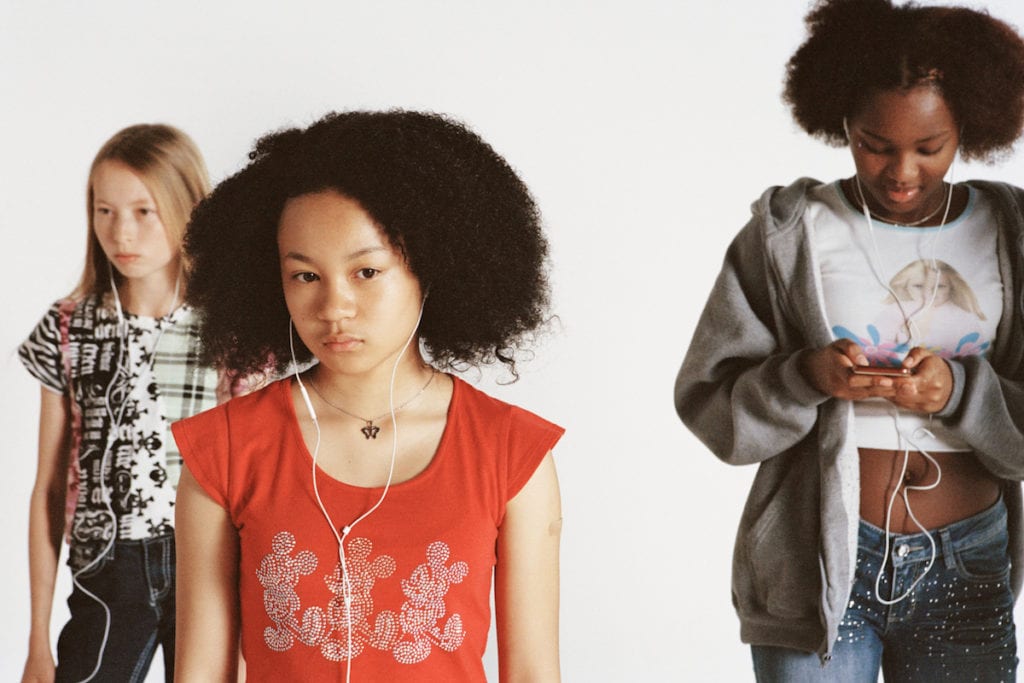

—
How did you conceive of the idea for Show Me How To Feel?
It was a natural development of ideas from our previous work Out of You. Both projects comment on the performative nature of identity and identity construction. We were interested in the cross-section between the cinematic and the photographic with young actors enacting situations that are intense and emotional, which speak to the ideas of group dynamics and power exchanges. They’re role-playing but, we try to get to a point where they may forget their roles and character; the point where its hard to distinguish the line between the real and the performed.
Can you elaborate on the notion of “the realisation of the self in the performance of the other”, which drives the work? It brings to mind the sociologist Erving Goffman’s publication The Presentation of Self in Everyday Life, specifically the idea that an individual develops an identity or persona as a function of interaction with others. Was this a reference point? What interests you about this concept?
It ties back to the title of the work. Through the construction of various scenarios, we were attempting to create an environment and opportunity for new realisations on one’s capacity for distinctive emotional displays, actions and reactions; the moment when one loses themselves and transcends their person and the pre-assumed facets of their identity. At this moment the individual has revealed something new about themselves, the aim of the actions is for the actors to lose themselves and feel something new via the exchange within the group, the scene and our direction.
The title Show Me How To Feel references this idea and is something the actor’s experience, and us, as the artists and directors of the work. The title is also a reference to the audience’s relationship with an artwork. We were not aware of Goffman’s work before, so it was not a reference point for us. However, we have explored it since; it’s interesting. There are certain themes, like the part of the work where we photographed the actors’ faces up-close while they take selfies with their phones. We could apply this idea of impression management as control within the group to the theory.
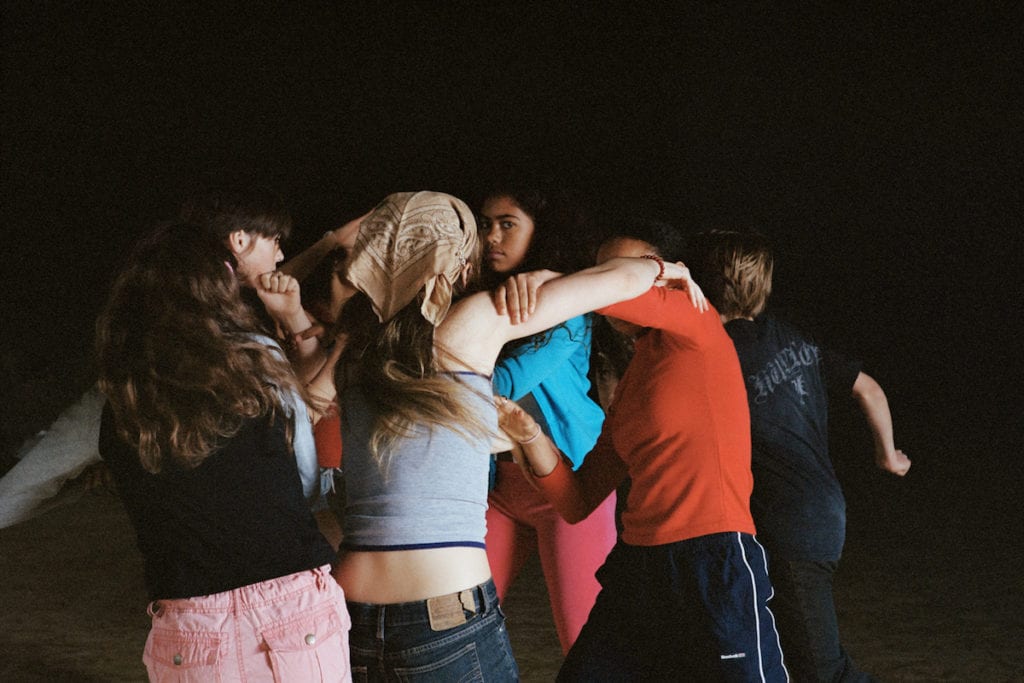
“While many of the ideas explored in this work are universal, we specifically chose our cast as an embodiment of identities in flux”
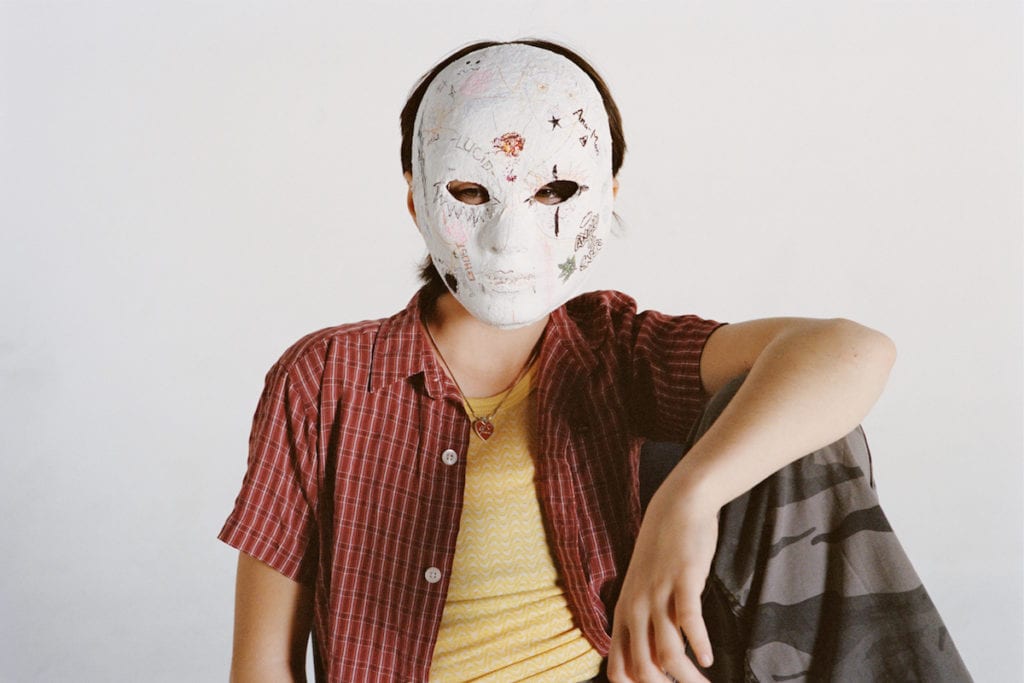
Why did you select an empty Hollywood soundstage as the setting for the series, and why did you cast the featured individuals? Collectively, what do they represent?
A soundstage is transportive for actors because they feel that they’re there to perform. But there’s no set or props for them to rely on for context. The empty space is a reflection and suggestive of the latent. The actors potential coincides with the environment’s potential. The group is like an organism that breathes and shifts. Collectively they represent bliss, dream, death, hate, uncertainty, play, angst, love, anger, friendship, discovery, violence, tenderness, cruelty, ritual, pleasure, isolation, entropy.
Why did you select this age-group? How would the work have differed if you had cast adults instead?
While many of the ideas explored in this work are universal, we specifically chose our cast as an embodiment of identities in flux. The general association is that at this age our needs, wants, desires, and manners of social exchange, tend not to be solidified. Relation with one’s self and others tends to be more fluid. If we cast adults instead, the work would function similarly, however, we feel that the actors would have been more considered and deliberate in their approach. We did not want experience and more defined identities to interfere with the explorative process we were collectively navigating.
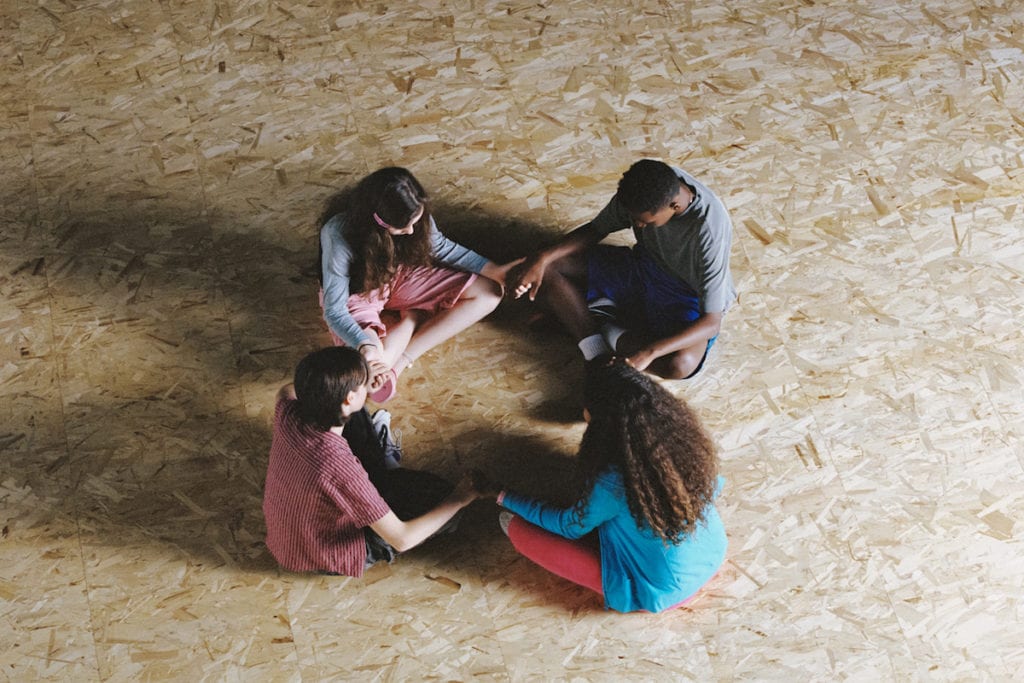
“While many of the ideas explored in this work are universal, we specifically chose our cast as an embodiment of identities in flux”
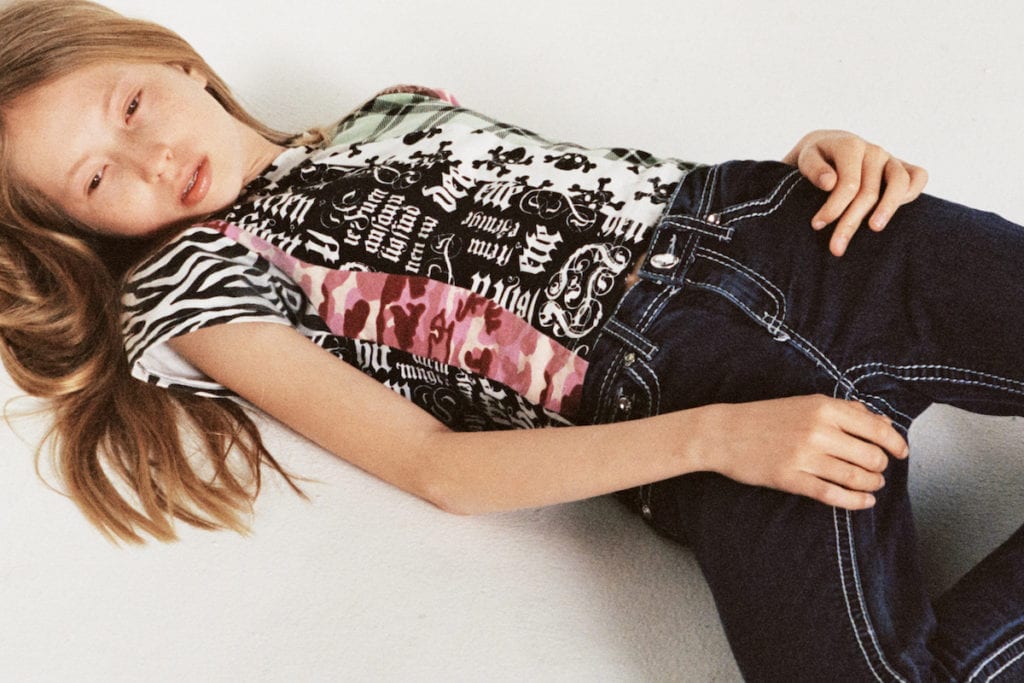
Can you select one or two scenes and explain the ‘construction’ behind them? How did you conceive of these set-ups?
We wrote detailed scenes which had starting, middle, and endpoints. These were vehicles to explore the space in-between and create images that depict transitions and beyond. We rehearsed all the scenes with the actors, but an overarching narrative does not ground the scenarios. Without markers of what precedes and proceeds each scene, the actors did not have a way to contextualise the set-ups they were navigating. The desire to experience a new sensation, and exploration of the potential within, triggered and motivated these actions. This is the guiding principle behind each scene, which the images realise.
What is the significance of the mask?
The mask is such a traditional tool in acting. We liked this idea of the neutral mask, and its capacity to obscure. By concealing the face, attention gets shifted to the physicality of the actor’s body. This prompts both the actor and viewer to focus their attention on the gestures, pose, and actions. The names of characters are scrawled on the interior and exterior, thus alluding to the idea of potential selves.
Show Me How To Feel was made possible through partnership with WePresent. Prints from the series are on sale here until September 16th 2020 with all profits from the fundraiser being donated to organisations, which provide arts programs and classes for youth in underserved communities.
